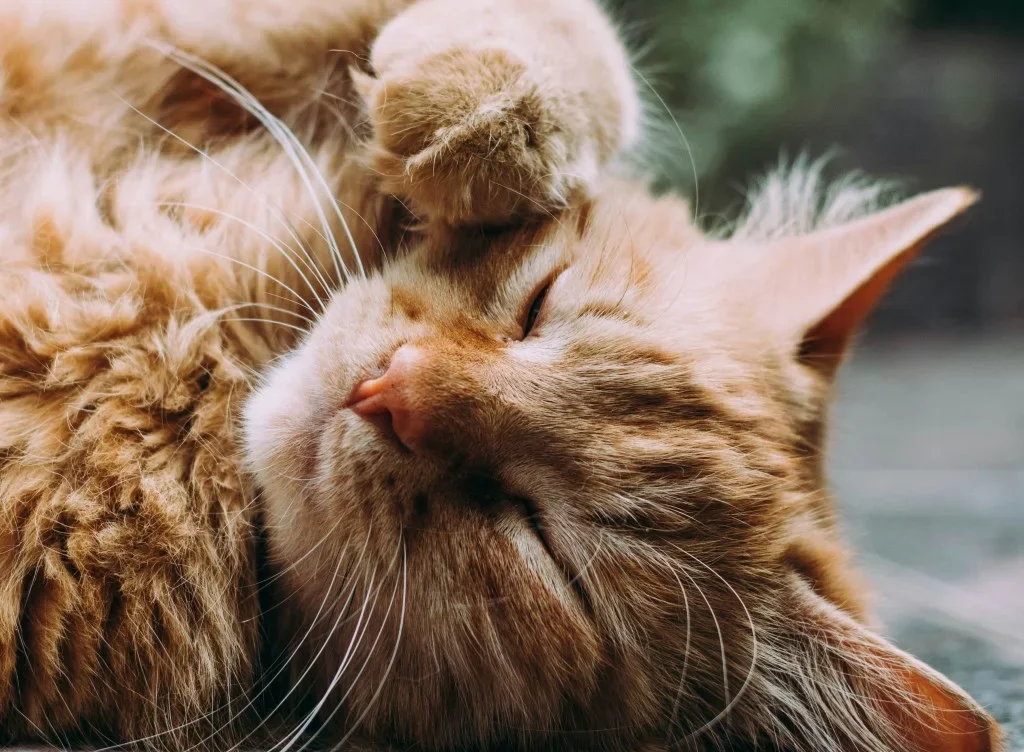
Unlocking the Secrets of Cat Behavior: A Guide to Their Quirky Traits
Decoding the Peculiarities of Cat Behavior: 20 Unique Traits Explained
Why Do Cats Rub Their Faces on Everything?
Cats exhibit a charming habit known as face rubbing or cheeking. This act isn’t just about seeking affection; it’s a sophisticated mode of communication. By rubbing their faces against owners or objects, cats deposit pheromones to mark their territory, conveying a sense of ownership and comfort in their space.
This behavior, often observed when you first return home, helps to create a common ‘colony scent’ that is reassuring to your cat. It’s a way they claim you as their own and strengthen the emotional bond between pet and owner.
Understanding these scent markings can help you appreciate the nuances of your cat’s territorial behavior and affectionate gestures, fostering a deeper connection with your feline friend.
The Meaning Behind Head Butts
Also known as ‘bunting,’ head butting serves multiple roles in cat communication. This endearing behavior is primarily a display of trust and affection. By head butting, your cat not only shows love but also marks you with scents produced by glands located around their face.
This behavior is similarly crucial for a cat’s social life. It’s how they greet and express comfort with other cats or humans, essentially declaring that they feel safe and secure. Seeing head butting as an invitation for social interaction is key to understanding your pet’s social habits.
Regular positive reinforcement when your cat shows affection can encourage these friendly behaviors, enhancing your bond and providing reassurance to your pet.
Understanding Sudden Nipping or Biting
While it can be startling, a sudden nip from your cat during a play session often means they are getting a bit too excited. This behavior is a playful gesture but can indicate the need for more interactive playtime or mental stimulation.
It’s essential to observe the context in which these bites occur. If they happen during play, consider enriching your cat’s environment with more toys or engaging in regular playtimes to help channel their energy positively.
If the behavior continues or seems aggressive, consulting with a vet or a pet behaviorist can be beneficial to address any underlying issues and to prevent potential behavioral concerns.
The Significance of Tail Twitching
The mysterious flicks and twitches of a cat’s tail can be a window into their emotional state. Tail twitching often occurs when a cat is alert and focused, possibly watching prey or getting ready to pounce during play.
However, tail movements can also express a range of other emotions, from annoyance or irritation to excitement and happiness. Observing these subtle signs allows you to better understand and respond to your pet’s needs and moods.
Being aware of what different tail movements mean can enhance your communication with your cat, helping you respond more effectively to their emotional and physical needs.
What Kneading Means in Cats
Kneading is a rhythmic pressing motion cats make with their paws, often on soft surfaces. Originating from kittenhood behaviors of pressing against the mother’s belly to stimulate milk flow, this comforting action is carried into adulthood, signifying contentment and well-being.
When your cat kneads on your lap, it’s often a signal of trust and comfort. This instinctual behavior is also a way for cats to create a cozy resting place or mark their scent in an area, enhancing their sense of security.
If kneading comes with excessive meowing or seems compulsive, it could indicate stress or anxiety. In such cases, a consultation with a veterinarian can help ensure your cat’s well-being and address any health concerns.
Decoding Cat Communications: Meows, Hides, and Excessive Grooming
Understanding the variety of ways cats communicate, like meowing, hiding, or grooming, can tell you much about their health and mental state. Regular vocalizations like meowing can range from seeking attention to expressing discomfort. On the other hand, behaviors like hiding or excessive grooming can be signs of stress or illness.
An attentive owner will notice these subtle changes in behavior and can appropriately respond, perhaps by providing a safe space or engaging in calming interactions. Positive reinforcement techniques, such as comforting pats or treats when they socialize or are calm, can also help adjust their behaviors.
If these behaviors persist, they might indicate health issues or deep-seated anxiety, suggesting that a visit to the vet or a professional behavior consultant might be necessary for your pet’s health and happiness.
